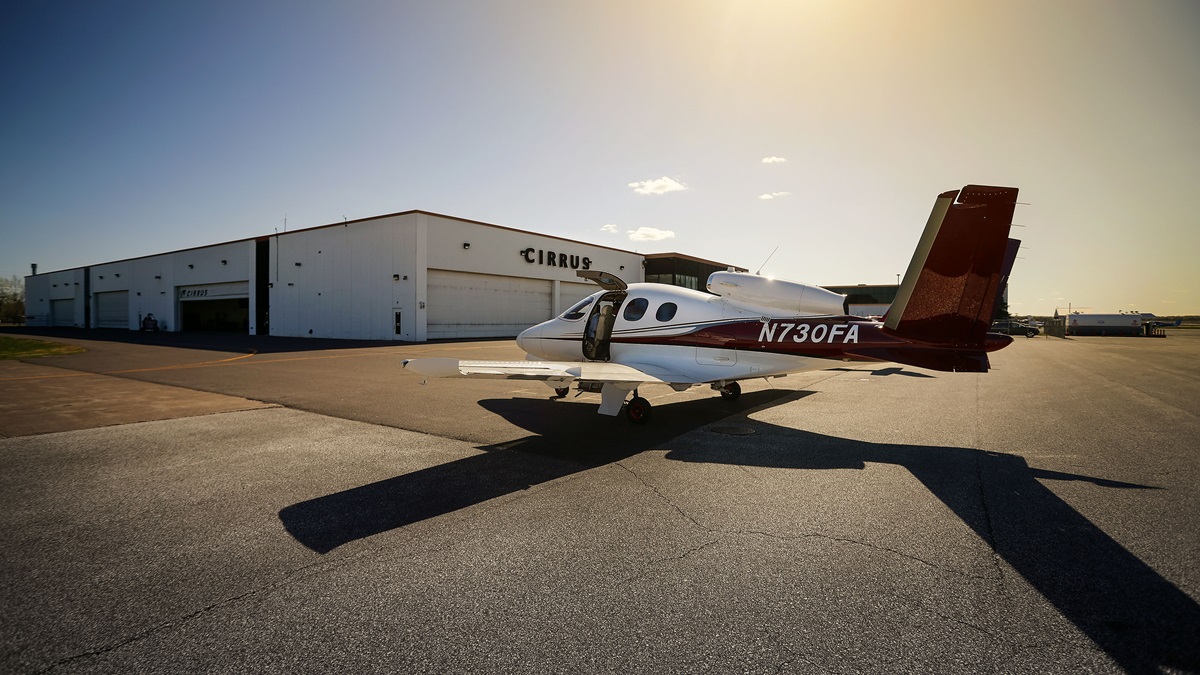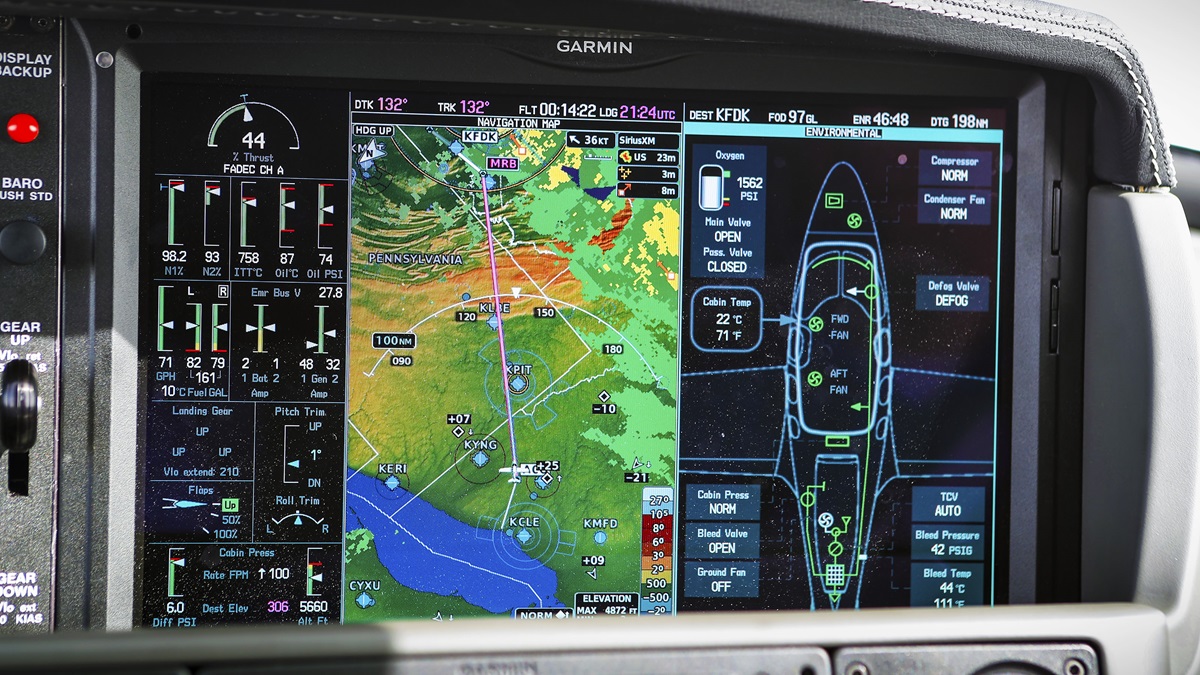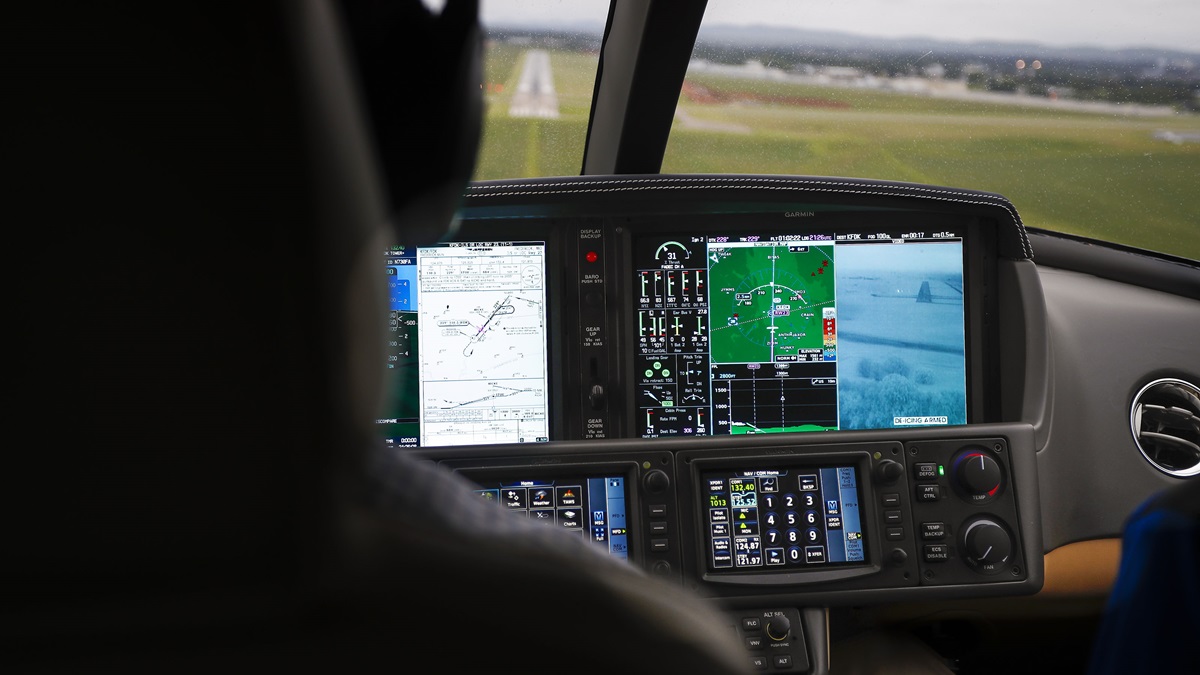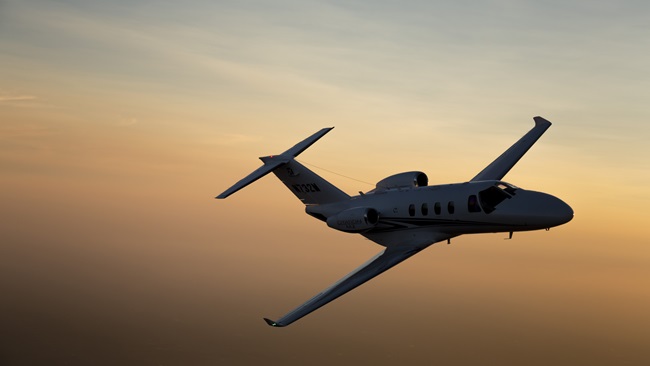Cirrus defines the personal jet
Single-engine jet creates a new category of aircraft
Call it what you want—The-Jet, the SJ50, the SF50, the Vision Jet—but the first single-engine general aviation jet is ready for prime time after a decade of development. For lack of an official name at the time, Cirrus called it The-Jet, unveiling it to anxious prospective customers and the media on a balmy Minnesota June evening in 2007. The vision was for a single-engine jet capable of flying about 1,000 nautical miles at 300 knots at 25,000 feet with handling characteristics similar to the piston-powered SR22. The “vision” part stuck, as the airplane AOPA Pilot had the chance to fly in May 2017 resembled that concept in many ways. In fact, the SF50 model came to be known as the Vision Jet a couple of years later.
The proof-of-concept airplane flew less than a year after that debut at the Duluth factory. However, like a lot of other business projects, progress languished after the economic turmoil of 2008. But through difficult financial times and management changes, Cirrus toiled on, ultimately winning FAA certification of the seven-seat jet in the fall of 2016 and delivering three airplanes before the end of the year. The company received an FAA production certificate in early 2017 and is ramping up production this summer, planning to deliver 40 by the end of the year and double that in 2018. Some 600 customers have put down refundable deposits on the $2 million V-tail. The Cirrus marketing staff is demoing those prospects in the new airplanes, hoping to get firm commitments from all.
Air traffic controllers too asked multiple times about what we were as we made numerous stops crisscrossing half the continent over a couple of days. One controller, obviously a pilot, tied up the frequency for several minutes quizzing us about the performance and encouraging us to stop by his airport so he and his buds could see it.
What’s remarkable about the SF50 is how much it resembles the original concept. Usually, new designs morph significantly during years-long development. But the Vision Jet looks much like that original mockup and fits the company’s original concept. The most significant change is that the certified version can fly up to 28,000 feet, instead of 25,000 feet. Over most of our four legs we saw cruise speeds over the promised 300 KTAS. Early in the first leg, speed maxed at 297 knots, but the temperature was 11 degrees C above standard, so understandable. Otherwise, burning the predicted 64 gallons of Jet A an hour, we routinely saw more than 300 knots. With the thrust lever at max continuous and allowing the fuel burn to creep up to as high as 72 gph, we saw speeds as high as 315 knots, all between FL260 and 280. The final short leg from Cleveland back home to Frederick, Maryland, we stayed at FL230, where the speed settled in at 292 knots and 70 gph, the penalty for flying lower than optimal.
While the cruise speed and rates of climb of 1,500 to 2,500 feet per minute will not turn heads among the twinjet crowd, the overall performance is a significant jump up for the average Cirrus SR pilot, for whom the jet was designed. And those wanting new in the same category, whether a single-engine turboprop or a very light jet, will pay about $1 million more and in some cases closer to $2.5 million more.
SR pilots transitioning to the jet will find most every switch, knob, and other control right where it is in the piston airplane. The SR’s unusual side yoke has been replaced by a more conventional sidestick, but the handling characteristics are eerily similar to the piston airplane. Even the approach speeds are the same. VREF on the jet, as calculated by the flight management system, was just 85 KIAS. So at VREF plus 10 knots on approach, you feel like you’re hardly moving. The slow and highly manageable speed proved helpful when I flew a circling approach to Cleveland. Breaking out on the ILS 24R and circling over Lake Erie to Runway 6L was a simple task at such a slow speed, with the airplane feeling rock solid all the way around.
Should one get too slow, though, there’s plenty of assistance to keep you safe. First, the Cirrus Perspective Touch by Garmin panel has built-in flight envelope protection, which will nudge the stick forward to pitch down and increase speed. Ultimately, a stick shaker and then stick pusher will command a pitch-over if speed gets too slow—all with lots of aural and tactile warnings to keep the pilot in the loop. And, of course, as we’ve come to expect from Cirrus, this model has a whole-airplane parachute. The Cirrus Airframe Parachute System (CAPS) in the SF50 is quite different from the SR’s. For one thing, it must safely lower to the ground an airplane weighing as much as 6,000 pounds, as opposed to the SR22’s 3,600 pounds. The larger canopy deploys from the jet’s nose, as opposed to the aft fuselage. And, because of the jet’s greater speed operating envelope, a pull of the overhead T handle in the jet doesn’t necessarily immediately fire the rocket to deploy the chute. Instead, if the airspeed is above about 135 KIAS, the autopilot takes control, doing what is necessary to slow the airplane. If the handle is pulled at 250 KIAS, for example, it could take as long as 24 seconds for the parachute to deploy. One way or another, it will deploy within 30 seconds, which probably feels like an eternity. However, the pilot can help by following the checklist, which includes shutting down the engine, further helping to reduce the speed.
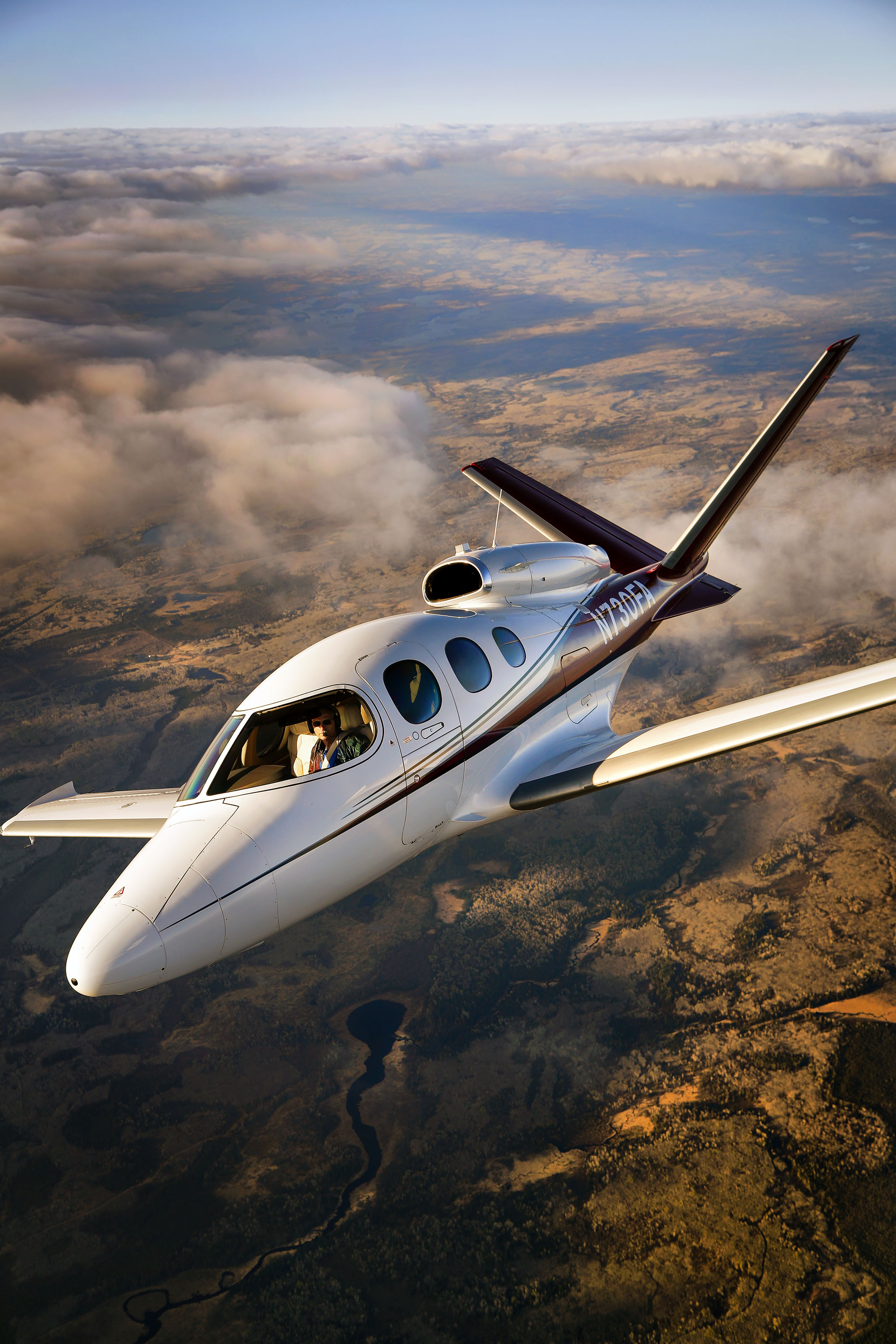
Like other modern jets, the SF50 is loaded with advanced technology. The pressurization system is completely automated. Picking up the destination elevation from the flight plan, the system executes the pressurization schedule with no input from the pilot; monitoring its action is easy on the engine gauge cluster, which is located on a portion of the massive multifunction display. The MFD and primary flight display can be split in multiple ways, showing moving maps, terminal charts, checklists, satellite weather, optional airborne weather radar, and system synoptics in any number of places. With a camera buried in the nose, you can even show an infrared video image of the runway environment. The two big displays are controlled by any one of the three smaller touchscreens arrayed in front of the pilot. There are plenty of options there, too, but for the most part, one each is dedicated to control what’s on each of the large screens with the third managing the com and nav radios.
Most of the cockpit will feel very familiar to a current Cirrus owner, right down to the single-lever power control. Except in this case it is managing the dual channel full-authority digital engine control (FADEC) connected to the Williams FJ33 turbofan engine. About the only two differences for the SR pilot will be pressurization, which as noted, is a nonissue, and—surprise—manipulating the landing gear. I confess to smiling when I lifted the Vision Jet’s gear lever; first time I’ve ever put the gear up in a certified Cirrus. And, one more difference, the jet has a manual pitch trim wheel, another first for a Cirrus.
 When walking up to an SF50, most are surprised at how big it is. It is impressively large compared to an SR. It sits relatively tall on trailing link landing gear. You step up onto the bottom half of the clamshell door, sit on the pilot’s seat, spin your legs around forward, pull the bottom half of the door up and the top half down, and slide way forward to the flying position. This can all be done after passengers are loaded, with the left front seat slid back only for a moment while the pilot gets in. It’s a much better experience for all than wedging yourself between the seats of most light jets and single-engine turboprops. Those in the row behind the cockpit have feet of leg room and plenty of headroom. In the way back, just one seat is against the aft bulkhead. It can be easily slid forward so that the aft passenger is stretching his legs between the two middle seats and making him a part of the same conversation group. Or, if needed, the two optional kid’s seats, limited to 90 pounds each, can be installed on either side of the aft seat. Or, any combination of the seats can be taken out by the pilot without so much as a logbook entry or change in the weight and balance data sheet. The Garmin system allows you to graphically change the seat configuration for each flight, showing whether you are within the weight-and-balance envelope. Two seats can even be folded and carried in the cube-shaped external baggage compartment if needed. The optional extension into the tailcone will be appreciated by anyone wanting to carry golf clubs.
When walking up to an SF50, most are surprised at how big it is. It is impressively large compared to an SR. It sits relatively tall on trailing link landing gear. You step up onto the bottom half of the clamshell door, sit on the pilot’s seat, spin your legs around forward, pull the bottom half of the door up and the top half down, and slide way forward to the flying position. This can all be done after passengers are loaded, with the left front seat slid back only for a moment while the pilot gets in. It’s a much better experience for all than wedging yourself between the seats of most light jets and single-engine turboprops. Those in the row behind the cockpit have feet of leg room and plenty of headroom. In the way back, just one seat is against the aft bulkhead. It can be easily slid forward so that the aft passenger is stretching his legs between the two middle seats and making him a part of the same conversation group. Or, if needed, the two optional kid’s seats, limited to 90 pounds each, can be installed on either side of the aft seat. Or, any combination of the seats can be taken out by the pilot without so much as a logbook entry or change in the weight and balance data sheet. The Garmin system allows you to graphically change the seat configuration for each flight, showing whether you are within the weight-and-balance envelope. Two seats can even be folded and carried in the cube-shaped external baggage compartment if needed. The optional extension into the tailcone will be appreciated by anyone wanting to carry golf clubs.
Typical with FADEC engines, starting is a one-button affair, although in this case you don’t even have to introduce fuel into the start sequence; the system does it for you. Taxiing a jet with castering nosegear will be a new experience for most, but especially SR pilots will adapt quickly.
I was particularly curious how the airplane would react to changes in thrust, given the high thrust line of the engine. During the rollout in 2007, Cirrus officials suggested that a mechanical thrust vectoring system would solve any tendency for the airplane to pitch down with an increase in power, as would be expected in such a configuration. However, the certified airplane has no such vectoring system, as the engineers figured out ways to angle the engine and the thrust to make it fly conventionally.
Another concern with a V-tail might be yaw stability, which has proven to be an issue in V-tail Beechcraft Bonanzas. Again, clever engineers at Cirrus solved this with a yaw stability augmentation system. Two small surfaces located on the aft end of the strakes below the ruddervators are moved automatically by the flight control system as it senses changes in yaw, whether the autopilot is on or not. The system is passive to the pilot. There is no yaw damper switch. The results are impressive with no hunting in yaw. The ball stays centered unless the pilot uses the rudder pedals to move it.
I’d love to regale you with Herculean tales of flying the Vision Jet, but in fact, it is simple and easy to fly, entirely predictable. By my third leg in the airplane, I managed the checklists, start-up, taxi, takeoff, climb, and level-off at FL270 without any input from Cirrus’ Matt Bergwall, who spent his time looking out the cockpit’s massive windows. The climb from Duluth’s 1,400-foot elevation took 17 minutes and consumed about 23 gallons of fuel. Upon level-off, I engaged the autopilot, leaving the thrust at max continuous. Done.
Like most modern, digital autopilots, the sophisticated Garmin flight control system allows you to manage descents any number of ways. SR pilots not used to flying in the flight levels will need to figure those out, but a little education and practice will take care of that.
Bergwall says to expect to burn about 80 gallons of fuel the first hour and 65 to 70 each hour beyond that. For each of our legs, with four adult males on board, overnight bags, and lots of camera and video gear, we took off with about 215 gallons of fuel, putting us right at the maximum takeoff weight of 6,000 pounds. Cirrus presents fuel information in gallons, whereas most jet operators calculate fuel in pounds. The fuel page on the MFD does provide fuel in pounds for those who prefer that metric. That fuel load limited us to about two-hour legs, with a generous fuel reserve. But at 300 knots or so, you’re covering some serious ground in two hours.
Because of our weight, we were outside Cirrus’s design goal of being able to move 800 pounds for 800 nm. With a full 296 gallons on board, a typical useful load will be less than 500 pounds. Cirrus analysis of actual flight data for single-engine turboprops and light jets shows that the average stage length in such airplanes is less than 420 nm. The average SR22/SR22T trip is less than 265 nm. So for those stepping up from Cirrus piston airplanes, the SF50 provides an increase in speed, altitude, and, on most missions, range.
When it comes to landing, the SF50 is also SR-like. Cirrus piston airplanes land in an attitude similar to many jets anyhow, with the nose lower than most other light airplanes. That attitude picture will serve new SF50 pilots well, but even then many will want to flare higher than they should because of the big windshield and sloping nose. Keep the nose down until it feels as if the nosegear is going to tear up the center stripe, and then nudge your left elbow into the arm rest a bit. That will be about the right amount of pull on the stick for a nice roundout and smooth touchdown on the trailing-link gear.
Although the similarities to the piston airplanes are many, flying a jet is not the same. Also, the jet’s Perspective Touch cockpit is based on the Garmin G3000, which has a different interface than the Garmin G1000-based system in the SRs. And, of course, the FAA requires you to hold a type rating to fly any jet—a checkride that is done to airline-transport-pilot-standards, regardless of the rating held by the pilot. Plus, the type rating must be renewed every year.

Cirrus says its training course will take most pilots about 10 days. Today the training is done in a flight training device at the Duluth factory and in airplanes. Starting next year, it will be completed in a full-motion Level D simulator at the training center under construction at the company's delivery and service center in Knoxville, Tennessee.
To further ease the transition for those moving up to a turbine airplane for the first time, Cirrus has created a three-tiered warranty and customer service program, the highest of which includes scheduled and unscheduled maintenance, replacement of normal wear-and-tear items, software updates, mobile repair teams at your call, recurrent annual training, and even the right to return for brush-up training mid-year. In other words, turnkey. “We want the customer to have to write just one check and have everything taken care of,” said Bergwall.
Never a company to sit still, Cirrus is not only busy ramping up its jet production line, it is also scoping out prospects outside the Cirrus family of customers. Already, the company has seen interest from businesses that operate larger aircraft, but occasionally need to move only a couple of people around within a region, a mission where the SF50 can excel.
One way or another, look for the unique airplanes to show up on ramps near you soon. Listen on the frequency for “Cirrus Jet” and anticipate the questions from ATC.




